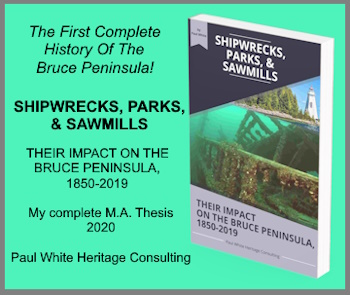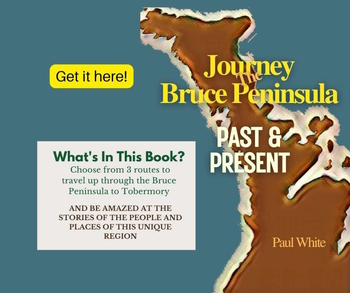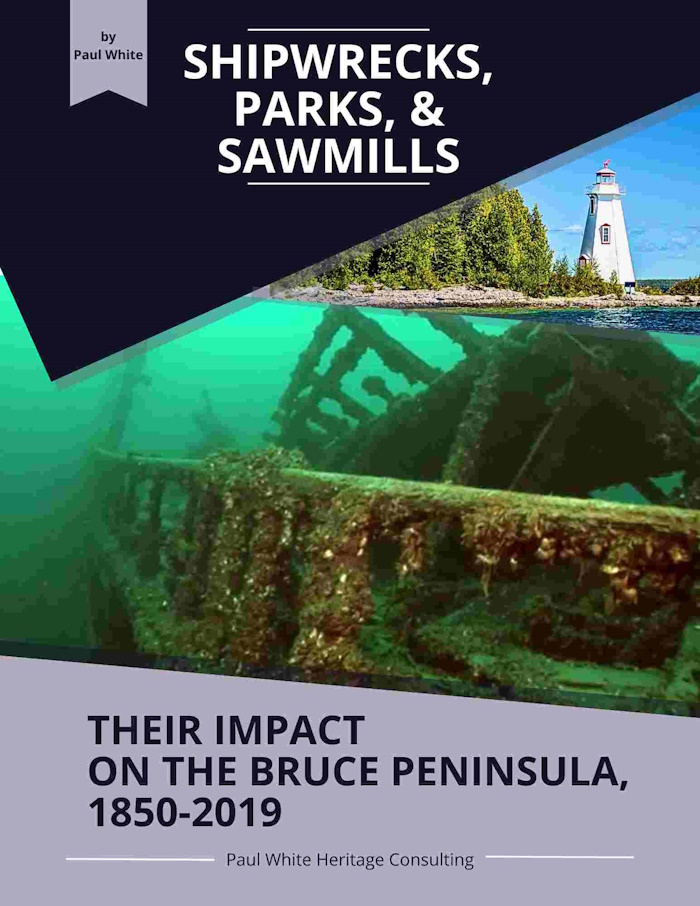Pioneer Settlement Plans for Grey County
Pioneer settlement plans for Grey County began almost two decades before the rest of Grey County was available for settlement.
Although pioneer settlement did not begin in the Owen Sound area until after Charles Rankin arrived there in the autumn of 1840, plans to settle what would become the County of Grey began long before that date.
1818 Treaty Paved the Way for Pioneer Settlement in Eastern Grey County
On October 17, 1818, the Colonial government signed a treaty with the Ojibway Nation for a tract of land that totaled 1,592,000 acres. This territory provided lands which became the southern and western portion of Simcoe County, as well as the area which would become part of Dufferin County. However, of importance to Grey County historians, this treaty also included the land which would become the townships of Artemesia, Collingwood, Euphrasia, Osprey, Proton and St. Vincent.
In 1821 a bill was presented to the House of Assembly listing the townships which would be opened in the future for settlement. At first glance, one would be hard-pressed to find the townships which would ultimately form part of Grey County. Collingwood Township was called Alba; St. Vincent’s original name was Zero; Artemesia was spelled Artemisia and Euphrasia was called Eurphrasy. However, before the bill could be passed by the Assembly its spelling was changed to Euphrasey and on some maps it was spelled Uphrasy. In fact, it is not known exactly when Euphrasia became the name of that township. Although it must have been sometime in the 1830s because Rankin’s orders to survey the area in the mid-1830s, it was spelled Euphrasia
After they were surveyed in 1833-34, Alba and Zero were re-named Collingwood and St. Vincent respectively.
How the townships were named is often an interesting question for historians to solve. Many of them were named after politicians and other important persons. At first it was thought that Euphrasia had been named after the wife of a British naval officer. However, it was later decided that Euphrasia was named after a plant known as eye blight, or Euphrasia Officinalis, which is a small annual herb from two to eight inches high and is common in the geographical area which extends in a northwesterly path from the state of Maine in the United States to the north shore of Lake Superior. It is also indigenous to Europe
Euphrasia Officinalis was given its more common name, eye blight, because of its flower. The blossom has a spot which resembles an eye. In fact, some compared the flower to a bloodshot eye! These descriptions were considered appropriate due to the belief that the plant had medicinal purposes in curing diseases of the eye. In fact, the powers of Euphrasia Officinalis were extolled as early as the 1300s and Milton wrote in Paradise Lost of its curative powers.
Rankin began his survey of Euphrasia in the summer of 1836 and after two months of hard work he and his crew had completed their task and all that was left, was the opening of the area to pioneer settlement. On September 21, Rankin delivered his report on his work in Euphrasia to his superiors in Toronto.
An interesting anecdote survives as to how Rankin came to name the Beaver River. It seems that one of the members his crew was part native and spoke only broken English. One Sunday afternoon this man was out for a stroll along the river when he came upon some beaver dams. When he returned to the base camp, he approached Rankin and pointed in the direction from where he had been and said “beaver-river”. At this point Rankin wrote in his notes, Beaver River, and the name became official!
A version of this article first appeared in my Local History column in the Owen Sound Sun Times.
History Pages
Baseball History in Southwestern Ontario is rich, and surprisingly longer than one might expect, actually setting historical precedents!
Census Takers in 1891 Canada faced difficult obstacles to gather the necessary information but the results were revealing then, and today.
The Glorious Twelfth: A Tradition from Across the Pond which served to both unite and divide pioneer communities.
Maple Syrup: A Pioneer Necessity and a trading commodity for indigenous peoples is now a Sunday morning breakfast treat with pancakes!
Paris Ontario: Who Knew this community had such a unique origin and how the local citizens used that history to protect the environment of their region?
Pioneer Christmas: A Family Tradition as told to me by may grandparents who experienced Christmas as children in the 1880s and 1890s.
"Thank You to a Veteran" - should be something everyone of us should think, and especially say, every day!
From Lochnaw to Manitoulin - A Review this book details through a soldier's diary a trip from Penetanguishene to Manitoulin Island in 1839.
Baseball History in southwestern Ontario has very early beginnings and the dominance of Canadian teams in early competition may be surprising to many readers.
History Pages introduces the readers to interesting people, places, and events that I have researched and written about in my writing career that spans more than three decades.





